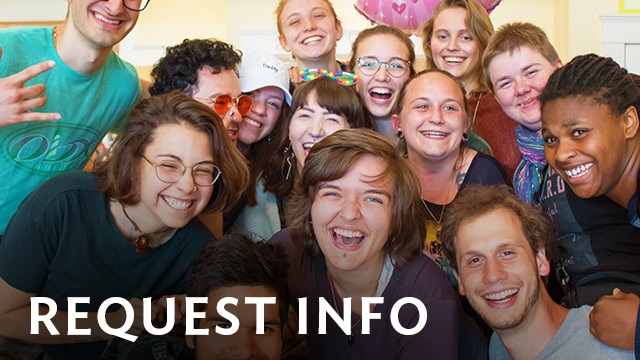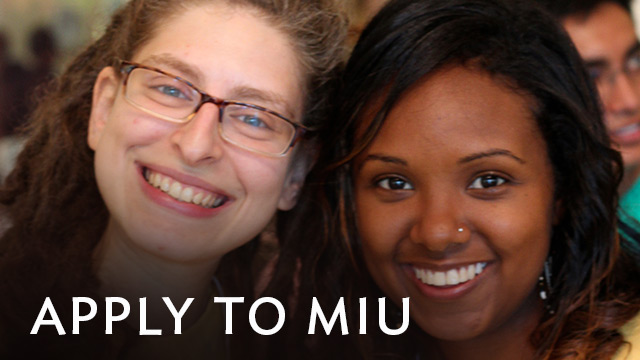- MVS 241 Models of Development: Frontiers of Human Potential
This course will explore models of human development across the lifespan. You will examine Piaget’s model of cognitive development; Loevinger and Cook-Greuter’s models of ego or self-development; Kohlberg’s model of moral development; and the Science and Technology of Consciousness of Maharishi Mahesh Yogi.
- SL W200 Change Begins Within
If one wants to change the world, what better way than to start with oneself? This is the simple premise of the course. It is part study and part personal challenge. We will learn about the science of well-being, health, and wholeness from modern science and Vedic Science, and about the dynamics of behavioral change. We will then apply what we learn to our own lives. For the challenge part of the course, students will select two or more behaviors they wish to change. With the support of a small team, you will try to make these changes, applying the lessons of the course.
- MVS 210 Veda: Fabric of Consciousness
Is human knowledge inevitably partial or can we fathom complete knowledge? How are insights of ancient seers into the nature of reality relevant to our contemporary lives? This course examines questions such as these in light of Maharishi Vedic Science (“Vedic” is from “Veda,” meaning knowledge). You will learn about Vedic literature — including Yoga, Vedanta, and the Upanishads — in light of the direct experience of consciousness. From time immemorial, Vedic literature has been studied for its enlightening wisdom; this course explores Maharishi’s unified structure of Vedic literature as the dynamics of consciousness knowing itself. Qualities of consciousness — such as expanding, unifying, and analyzing — are explored in the branches of Vedic literature, in human physiology and in the structure of the universe.
- MVS 300 Science of Being and Art of Living
The Science of Being and Art of Living was Maharishi’s first book, published in 1963. In this course, both through reading and through studying Maharishi’s videos, students investigate the main themes of the book — Being, the essential constituent of creation; how to contact and how to live Being; how to live one’s full potential in thought, speech, action, and relationships; and God-realization.
- MVS 370 Maharishi’s Yoga: Theory and Practice
This course explores themes related to Yoga philosophy in light of the effortless, natural practice of Transcendental Meditation. The course introduces Yoga both as a settled inner state of mind and a path of development, as brought out by Maharishi in his books and lectures. Topics include Yoga and the brain, Yoga and health, development of full human potential, Yoga and Dharma, and the role of Yoga Asanas in the eight limbs of Yoga brought out in the traditional Yoga text, Patanjali’s Yoga Sutra.
- SL S300 Using Holistic Thinking to Understand and Address Complex Problems
How can we understand large, multi-disciplinary problems like climate change, food insecurity, and income inequality? By applying interdisciplinary, systems-based, integrative thinking — or holistic thinking. This is the starting point of this course. Using big and small, fictional and real, situations and formal problems, we practice looking at problems from multiple angles, with the aim of integrating what we know and finding holes in our own understanding. This thinking is further enhanced through the introduction of a number of Consciousness-Based® principles that are transdisciplinary in origin and help us see larger patterns in the dynamical systems that make up problems. From applying these principles students gain a systematic and practical approach to understanding and approaching problems.
- MVS 309 Social Transformation and World Peace
Course participants study how Maharishi applied the ancient knowledge of Yoga technologies to create contemporary solutions for world peace. This includes a focus on the principles of and published scientific research on creating coherence in the collective consciousness. There is an in-depth review of Maharishi’s historic unfoldment of this knowledge from 1960 to current strategies to create permanent world peace in this generation. By way of comparison, there is also a brief review of other peace-creating strategies. The course includes both theoretical understanding and direct experience of peace-creating programs, with emphasis on the relationship of personal inner peace and peace creation in the public domain.
- MVS 302 Dharma: Insights from Maharishi’s Commentary on the Bhagavad Gita
What action in life is best for your personal development – your “Dharma”? How does this relate to family, social, and global responsibilities? How do we make the right decisions for ourselves and others, and act in a way that is enjoyable, not stressful and exhausting? This course studies timeless questions and dilemmas such as these, discussed in the Bhagavad-Gita — using as a guide Maharishi Mahesh Yogi’s translation of and commentary on chapters one to six.



 Jess Nohle is this program’s admissions counselor for US students. Jess will provide you with all the details of becoming a student, including connecting you with the program director or faculty.
Jess Nohle is this program’s admissions counselor for US students. Jess will provide you with all the details of becoming a student, including connecting you with the program director or faculty. This course is your entryway into MIU and Consciousness-Based Education. We dive into an ancient yet radically new framework for understanding the universe and our place in it. This model holds that consciousness, not matter, is fundamental. With this in mind, we look at some of life’s big questions: How can we develop our fullest potential as human beings? How do art and stories help us understand that potential? How can our own growth help create a more just and peaceful society? What do the world’s great wisdom traditions have in common? How can we improve education and healthcare? The new paradigm we explore in this course infuses all your classes at MIU. In this course, you'll learn the Transcendental Meditation® technique to awaken the full potential of consciousness in your life.
Comments from students
This course is your entryway into MIU and Consciousness-Based Education. We dive into an ancient yet radically new framework for understanding the universe and our place in it. This model holds that consciousness, not matter, is fundamental. With this in mind, we look at some of life’s big questions: How can we develop our fullest potential as human beings? How do art and stories help us understand that potential? How can our own growth help create a more just and peaceful society? What do the world’s great wisdom traditions have in common? How can we improve education and healthcare? The new paradigm we explore in this course infuses all your classes at MIU. In this course, you'll learn the Transcendental Meditation® technique to awaken the full potential of consciousness in your life.
Comments from students




